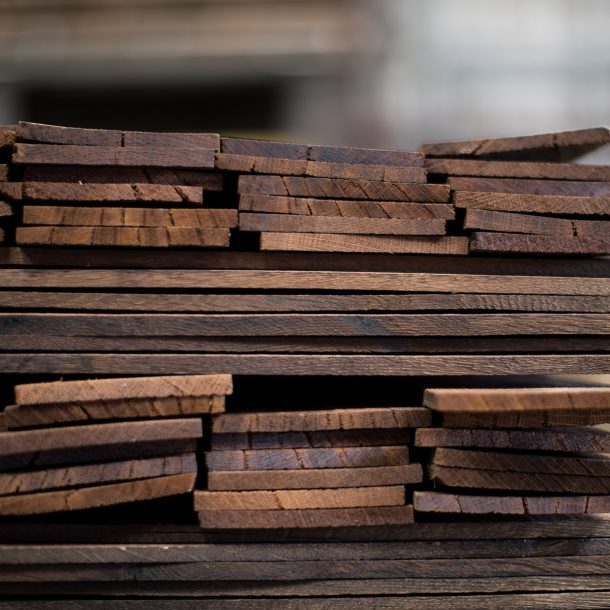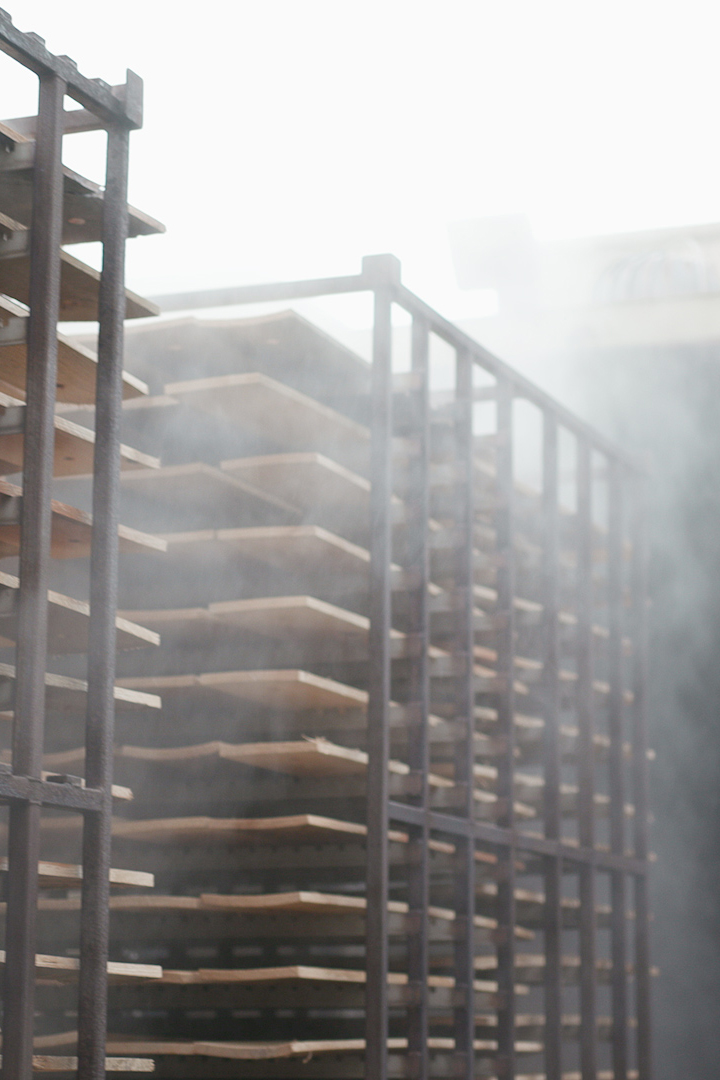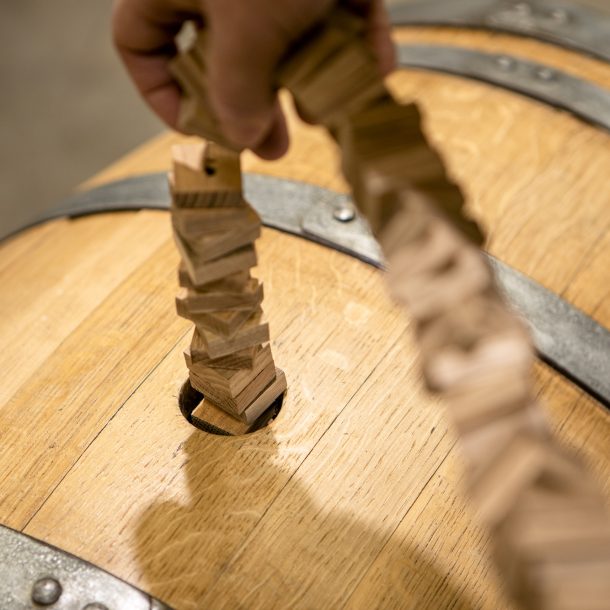
it’s the only way to develop certain flavors
It doesn’t seem that long ago (25 years!), but back in 1997 my daughter joined me for a “Take Your Daughter To Work Day” (Is that still even a thing?). She was probably 6 or 7 at the time. I worked in Louisville for a major distilling company and we had joined a tour of a cooperage we owned. She was impressed by the coopers putting the wood staves together, but was absolutely mesmerized by the fire charring near the end of the process. It remains a mesmerizing display even to me. She asked me, “Why do they have to toast and char the barrels?” I wasn’t sure how much science a young kid could absorb, so I casually said, “Well it’s the only way to develop certain flavors and colors of the bourbon.” She nodded and accepted my answer. It’s an acceptable answer, but leaves a bunch of other questions to ask and answer…
what happens when you toast the oak?
I’m assuming you’ve read this far because you want to ask some of those questions or learn about more of the science of what happens when heat is applied to wood. We’ll stick to toasting and leave charring to another post, because the charring has other historical and scientific complications to it.
Toasted barrels, a happy accident?
Historically, wooden barrels have been used to store foodstuffs for at least 600 years. Wooden barrels could be made water tight, and were tough enough to withstand long sea and overland voyages without sustaining damage or developing leaks. Who knows who, when or where toasted wood was used to make barrels, but at some point in the past wood used to make barrels was purposely, or accidentally toasted and when certain liquids were stored in them, they developed flavors that improved those liquids. So, we don’t care who discovered it, we will just accept the facts. But what actually happens when heat is applied to the wood?
100% of the color comes from the oak
Let’s start at the basics… about 70 percent of the flavor of bourbon whiskey and 100 percent of the color comes from toasted wood. The other 30-ish percent of flavor is brought in by the action of fermentation by yeast on the sugars of the grains used in the mash, as well as by the distillation and separation of those fermentation flavors prior to barrel aging. That liquid that goes into the barrel is water white and clear as glass. The alchemy of aging for maturation and color generation all happens in the wood barrel. I will talk about bourbon whiskey because it is the only whiskey that must be aged in new toasted and charred White Oak barrels…no other whiskies require that. Every other whisky and barrel-aged spirits and foods, like tequila, rum and hot sauce, buys used bourbon barrels to age in.
Heat the magic happen
The wood of the barrel consists of 4 compounds: Cellulose (45%), Hemicellulose (22%), Lignin (25%) and Tannin (8%). However, only the Hemicelluloses, Lignins and Tannins are critical for flavor and color generation. Cellulose is mostly inert. Each of the other 3 components change chemically when heat is applied and those chemical changes create precursors for flavor and color chemical reactions. When the conditions are right, those precursors undergo chemical reactions to generate the aromas and flavors in mature bourbon. The toasting of the wood creates the precursors and when combined with new whiskey distillate the reactions happen. The alcohol, water and oxygen can now help to drive the development of color, aroma and flavor when they contact the wood and the heat generated precursors.
furfurals = flavor
When Hemicellulose is heated, simple sugars such as Mannose and Zylose are generated. In the presence of ethanol, they can react to form the bulk of bourbon flavor and aroma. The creamy, cocoa-y, sweet brown, maple and brown sugar notes. Basically the furfurals: 5- Hydroxymethyl Furfural, 5-Methyl Furfural, and Furfural. The deeper the toast level of the wood, the more furfural precursors develop. Additionally, simple caramelization of the sugars create the amber color of matured whiskies.
Spicy Phenolics!
Lignins react to heat differently than Hemicellulose, but also create a wide range of flavor and aroma compounds. Lignins plus heat generate the spicy phenolics of whiskey. Vanillin, Syringaldehyde, 4-Methylguaiacol and Guiaicol contribute the clove, black pepper and sweet flavor of whiskies.
tannins are a complicated thing
Tannins (Quertannic Acid) provide the mouthfeel and structure of whiskies. They can also be easily extracted to provide some natural color of whiskey. Toasting the wood creates shorter chains of tannins which help to create less astringency and softer mouthfeel in whiskies.
A toasted and charred barrel is a complicated thing…
-Larry Wu,



